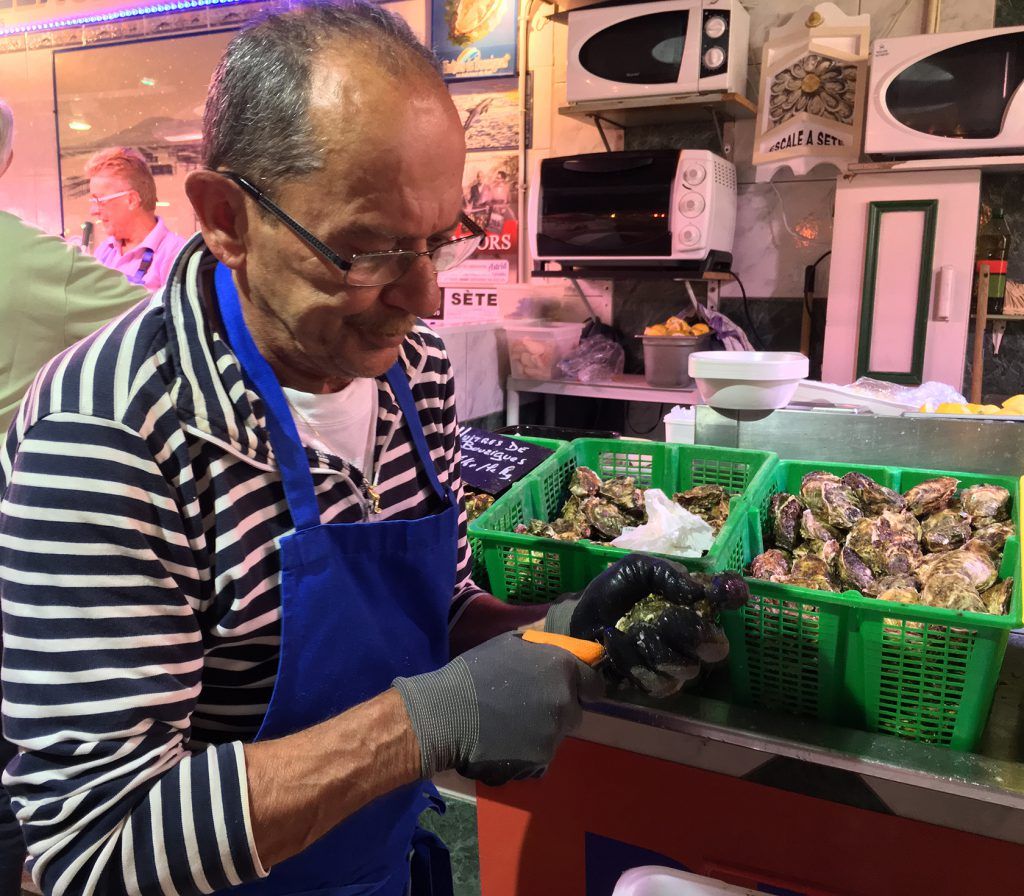Beaucaire is a small Provencal town located on the banks of the Rhone river and the Rhone-Sète canal, the name means beautiful stone. There is evidence of a Gallo-Roman settlement in this hilly area as early as 11 B.C.. The ancient community gave way to a medieval town in 1067 and the establishment of a castle in 1180.
Category Archives: France
Why you Need Patience at the Sous Préfecture in Provence
Nutmeg is self-admittedly not a patient person. She develops a plan, does not appreciate too much external input, and certainly is not thrilled when there is a proposed change. Living in France, with life at a slower pace, has helped with her natural inclination somewhat. Although, Ginger is certain that she may never be fully cured of her affliction.
Here, are some verbal “pictures” of life in slow motion:
- Walks with a 12 year old yellow lab
- Sunday morning coffee service at the village café
- Opening hours/days for the local boulangerie and boucherie
- Watching a dog sleep in the sun
- WiFi access in a thunderstorm
- A swimming pool warmed only by the sun
- Waiting for your tax refund

This post is about the ultimate lesson in patience, a heavy dose of bureaucracy, mountains of paperwork and long queues. Welcome to the world of the sous-préfectures (home of French Administration)! Nutmeg has had the pleasure of visiting a couple of these offices while in Provence, the location in Aix-en-Provence and equally attractive Arles office.
Isle sur la Sorgue a touch of Venice in Provence
Most people (read tourists) go to l’Isle sur la Sorgue for one of two reasons:
- The Sunday market – one of the largest in the region
- The 300+ antique stores and dealers
Very few would go because they were expecting Venice in Provence.

Dipping A Toe in France’s Ardeche
This post will most likely make Nutmeg’s Corsican friends angry.
Why bother with the hassle of an overnight ferry, crowded beaches and small twisty roads? If you want to feel like you, have experienced a bit of Corsica without leaving the French mainland, plan a trip to the Ardèche region.
The similarities between, the beautiful island of Corsica and the Ardèche are significant, see below:
Corsica | Ardeche | |
| Surface Area | 8,680 sq km | 5,550 sq km |
| Widest Point | 82 km | 75 km |
| Highest Peak | 2,706 metres Mont Cinto | 1,754 metres Mont Mézenc |
| Population | 302,000 | 309,000 |
| Annual Visitors | Roughly 2 million | Roughly 3 million |
| Agriculture | Chestnuts | Chestnuts |
| Olives | Olives | |
| Grapes | Grapes | |
| Goats, Sheep | Goat, Sheep, Cows | |
| Figs | Figs | |
| Beaches | 1000 km of coastline | Countless River banks |
| Geographic Formation | Volcanic | Volcanic |
Sunday Lunch in France
Nutmeg is writing this post on a rainy Sunday afternoon while Ginger is napping off the effects of a long Sunday lunch.
It is a long tradition in France that stores are closed Sunday afternoon, allowing everyone the opportunity to have a leisurely lunch en famille.

Culinary Destination Sète for Food Lovers
Do you consider yourself a foodie?
Sète needs to be on your radar.
Sète it is the kind of city that grows on you slowly, until one day you recognize that this fishy port has you hooked. Suddenly, you find yourself planning your next trip – reviewing the 10 reasons to visit and craving seafood à la Sètoise.
Exploring Paris Fashion with a Chic Shopping Tour
Kasia Dietz is a transplanted New Yorker who has called Paris her home for the last seven years. The “City of Light” lured Dietz into its fabulous web of art, culture and fashion while she was studying International Marketing in London. Ok, there might have been a swarthy Italian too, but she says, “It’s always been a city I dreamt of calling home.”
Juicy Gold the Cavaillon Melons of Provence
Nutmeg barely tolerates melons, in her opinion, the green honeydew version found in airport “fruit salads” should be outlawed. Watermelon and its variations without seeds or in ghastly yellow only belong on a picnic table with many children around.
The Fortress of Aigues Mortes in Provence
800km from its glacial source in Valais, Switzerland the Rhône River gasps as it reaches the Mediterranean Sea. Like a wide yawn the Rhône’s two branches; the Grande Rhône and the Petit Rhône empty their cargo at the mouth of the river. This area of Provence known as the Camargue, part of the Bouches du Rhône (mouths of the Rhône) is Europe’s largest river delta (930 sq km) and a wetland of significant size.

10 Reasons You Must Visit Sète
A whale and two anchors feature on Sète’s official coat of arms, a tribute to local maritime history, and the fact that Mont St Clair makes the city looks like a humpback. Archaeologists have dated remains of human activity (discovered in 1973) to the late Bronze Ages II and III. The Greek’s called the settlement Ketos (a name that evolved over centuries until Sète became official in 1928), however, it was France’s Sun King who put Sète on the map.














